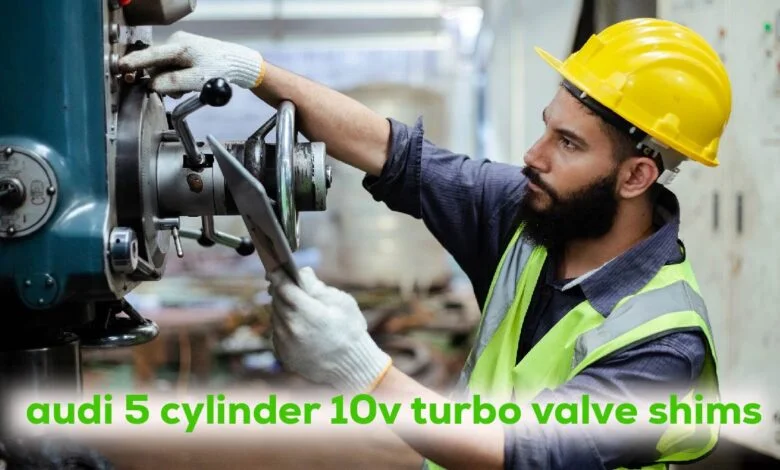Introduction to the Audi 5-Cylinder 10V Turbo Valve Shims
The Audi 5-Cylinder 10V Turbo Valve Shims are famous for their unique sound and powerful performance. It’s a favorite among car lovers because of its reliability and smooth drive. However, like all engines, it needs proper maintenance.
One key part of engine maintenance is the valve shims. These small metal pieces help your engine run quietly and efficiently. Knowing how they work can save you time, money, and help avoid engine problems.
Why Valve Shims Are Important
Valve shims keep the right space (called clearance) between the valves and rocker arms in the engine. This space must be exact for the engine to work properly.
If the clearance is too small or too big, the engine can make noise or wear out faster. Bad valve shims can lead to poor performance, lower fuel efficiency, and even engine damage.
By keeping the valve shims in good shape, you help your car run smoother and last longer.
How to Check and Measure Valve Shims
To start, open the valve cover on your engine. This gives you access to the valve shims.
Next, use a feeler gauge to check the gap between the valve and the rocker arm. Compare the gap with your car’s recommended clearance (found in your manual).
If the gap is too wide or narrow, you may need to replace the shim with one that has the right thickness. Write down all your measurements for each valve, so you can adjust them correctly later.
Step-by-Step: How to Replace Valve Shims
-
Remove the engine cover to access the valve shims.
-
Turn the engine manually until the cylinder you’re working on is at Top Dead Center (TDC). This releases pressure from that valve.
-
Check the current clearance using a feeler gauge.
-
If needed, remove the shim using a magnet or small tool.
-
Install the new shim that matches your required thickness.
-
Repeat the process for each valve that needs adjustment.
-
Reinstall all engine parts and torque bolts properly.
This process takes patience and precision but is essential for long-term engine health.
Common Problems with Valve Shims
Even though they’re small, valve shims can cause big issues if not properly managed. Here are some common problems:
-
Worn-out shims: They lose thickness over time, affecting valve clearance.
-
Wrong size shims: Can lead to poor engine performance or noise.
-
Misaligned shims: May cause rough engine behavior or clicking sounds.
-
Rust or corrosion: Damaged shims can reduce engine efficiency.
Fix these issues early by doing regular checks and replacing shims when needed.
How to Keep Your Valve Shims in Good Shape
-
Check valve clearance regularly to catch early signs of wear.
-
If you hear ticking or tapping sounds, inspect your shims.
-
Use high-quality shims and synthetic engine oil for better performance.
-
Follow your Audi’s maintenance schedule closely.
-
Have a professional mechanic inspect your engine if unsure.
Doing these things helps your Audi engine stay strong, quiet, and responsive for years.
Final Thoughts: Keep Your Audi Performing at Its Best
Maintaining the valve shims in your Audi 5-Cylinder 10V Turbo engine is key to keeping it running at peak performance. Regular checks, correct measurements, and timely replacements can help avoid major repairs and improve your driving experience.
Don’t ignore these tiny components—they have a big impact on your engine’s life and power. Keep up with routine care, and your Audi will continue to deliver that thrilling turbocharged performance you love.
